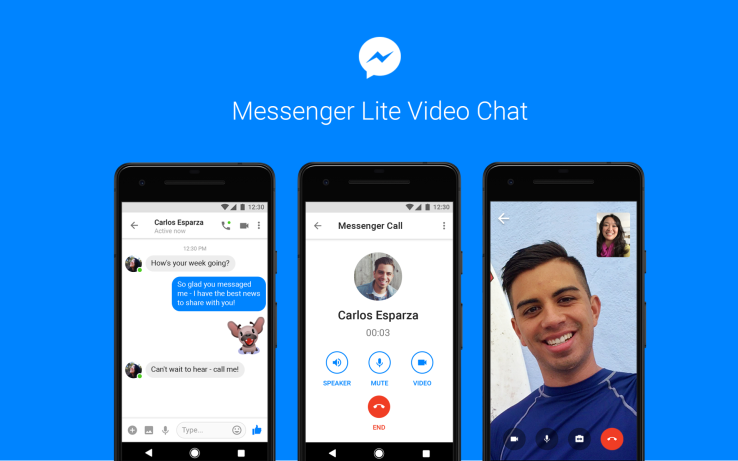
After bringing its pared-down Android app Messenger Lite to mature markets like the US and UK last autumn, Facebook is expanding its features to ramp up engagement. Today, the company announced that it is adding video chat into the mix.
Messenger Lite, first launched in 2015 was initially part of an effort from Facebook to build more apps to boost usage in developing countries, where mobile usage is more costly and people are more likely to use more lower-end Android devices.
The later expansion to mature markets was an acknowledgement that, in fact, those developing market consumers are not the only ones who want, need, and use less bloated apps. The app comes in at under 10MB, meaning it installs quickly and generally uses less bandwidth to operate.
As with the regular version of messenger, using video chat in Messenger is a quick step away from the main screen. In an existing or new conversation, or during an audio call, you just tap the video icon in the corner (in messaging) or in the middle of the screen (in a call) to switch to video.
Originally launched with a focus on Messenger’s core features — text messaging, photo and link sharing and stickers — today’s launch of video chat is a sign of two things. The first trend here is that Lite users are starting to move onto (and expect) more advanced services.
“Video chats are an expected and essential part of everyday communication in today’s messaging experience,” Facebook notes. “Chatting face-to-face live is perfect for those moments when you want to see and hear the voices of people you care about most – whether you’re wishing someone a happy birthday, you have some great news to share, or you spontaneously want to catch up on the day.”
But aside from functionality for users, it’s good business for Facebook. Video chat has been one of the bigger rocketships within its core Messenger app, with Facebook clocking 17 billion video chats on it in 2017, double the year before.
The second trend of note here is that technology is moving along, and delivering cost-effective streamed video services to mobile consumers is becoming easier and easier. Facebook’s infrastructure efforts are one example of how the social network is directly making efforts to bring that about, and also of how it’s benefitting from that work, if not directly monetising it by providing mobile network IP and other help to carriers.
Messenger Lite is in over 100 countries today, and while it’s not nearly as popular as basic Messenger in the US, it remains a popular app in many less mature markets, as of today firmly in the top 10 app rankings, and definitely in the top 25 of dozens of smaller countries, according to stats from AppAnnie.


